Table of Contents:
how to chalk paint: a tutorial for beginners
Are you ready for a great step-by-step chalk painting tutorial? We guide you through the process of painting, distressing and waxing to create a brand new look for your outdated furniture pieces. Let’s jump right in!
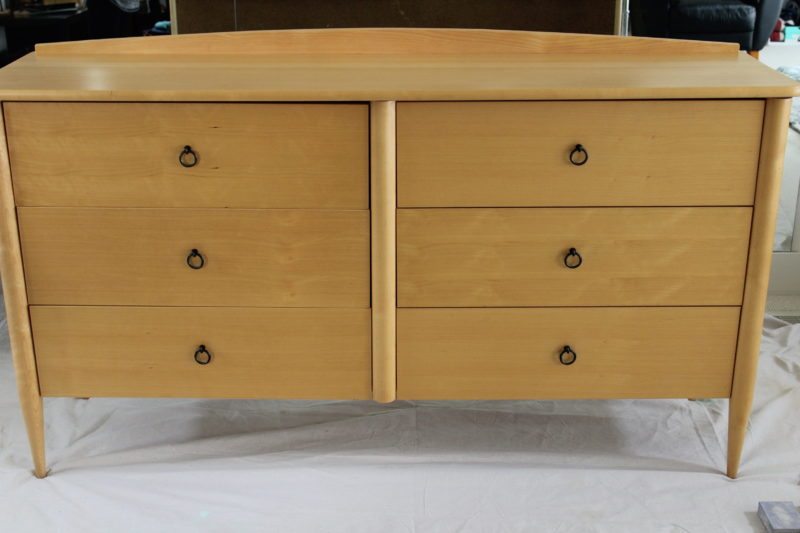
Chalk Painting Tutorial
We are here to help you get your chalk painting groove on. Sound fun? It is. Do you have pieces of furniture or home décor items you’d like to transform? Are you slightly intimidated by chalk painting or wondering if it’s worth the hype? Maybe you just have some questions before taking the plunge. Well, we are here to help. Consider us your new best friends when it comes to helping you become a resident expert on the chalk painting. We are going to walk you through the entire chalk painting tutorial, and we promise to be there to hold your hand from painting, to distressing, to the final waxing.
Let’s begin by setting your mind at ease. There are no real rules with chalk painting because there is no one look to achieve. You can’t ruin a piece because you can always add another coat. (We bet you feel better already, right?)
So, don’t be afraid to jump right in. The more you research sometimes the more daunting it can become. There are as many different techniques as there are people chalk painting. You will quickly determine your favorite methods and techniques. This article should give you plenty of confidence to begin.
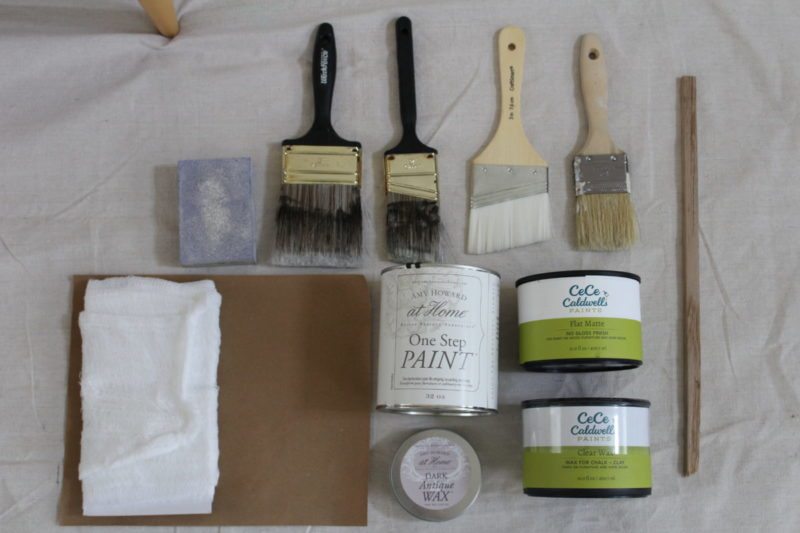
Tools Needed:
(Some of these are affiliate links we are providing for your convenience and to help pay for our blog. It is no additional cost for you to use these links and we appreciate your support.)
- Chalk paint
Here is one of our favorites:
- Finishing wax, clear, light, or dark
- Paint brushes, a couple for painting and at least one designated for applying wax only.
Here is a great brand we just started using for our projects and isn’t too expensive.
FolkArt brand Home Decor Chalk and Wax Brushes
- Drop cloth
- Moist cloth for dusting/accidental drips
- Screwdriver or paint can opener
- Sand paper for dry distressing (if desired)
- Cheese cloth
- Music (to keep you singing J)
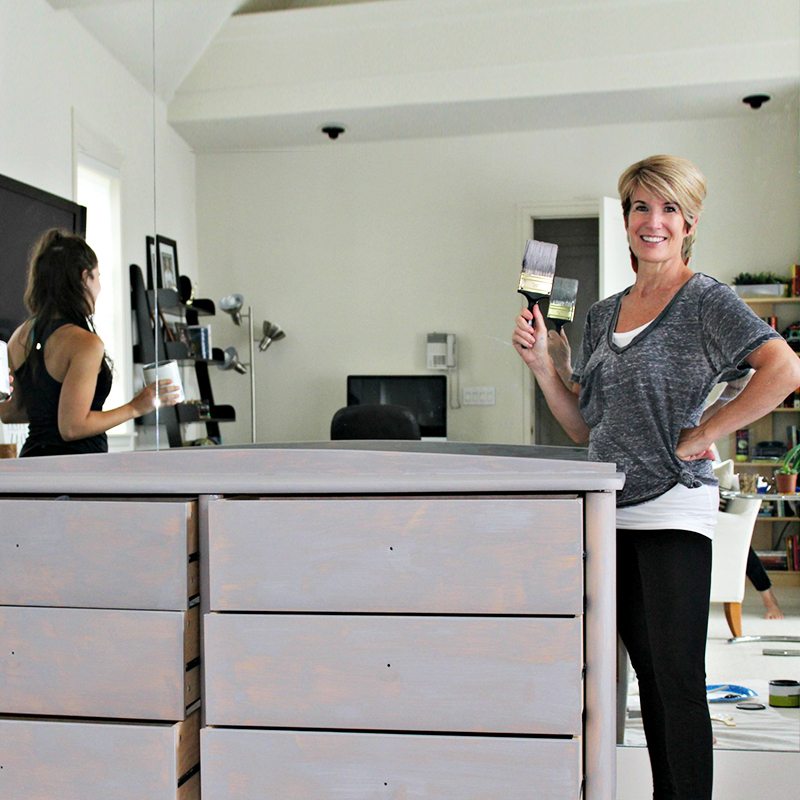
Let’s Get Started
What is chalk paint? It’s a type of paint started by Annie Sloan, but now many other companies have jumped on board. It has a chalky finish and is often used to achieve a shabby chic or aged look because it is easily distressed. It has very little odor so you can paint inside without harsh fumes. People love its ease of use. Little to no prep work is required. Also, it dries fast making projects less time consuming.
Chalk Painting Tutorial: Before You Begin
1. Gather your tools.
See the list above. Clear your space, whether you choose the garage or decide to paint right in the room where your furniture sits. For larger pieces, the convenience of not moving the furniture has won me over more often than not. Lay a generous drop cloth to protect your flooring, and create space so you have room to work. Wear clothes you don’t care about. No matter how careful you are expect a small amount of splatter.
2. Prep Your Piece.
As promised, very little prep is needed. Use a moist cloth and remove all dust and dirt. Make sure there is no oil from treatment products like furniture oil. If your piece has loose old paint you should do a little sanding. Otherwise, there is no need to remove old paint. In fact, if you will be distressing later these other layers of paint will add fun character to your piece.
3. Ready, Set, Paint!
Shake your chalk paint well. Because of the thicker consistency you will need to stir every 15 minutes or so. Some folks like to paint from a small dish or paper plate while the bulk of their paint remains sealed. I like to put my paint in a larger Tupperware container to allow for easier stirring and resealing.
Use back and forth strokes with the grain of wood. Work in a small space and move quickly. Don’t go over an area you just painted. As Jodie says, you’ve got one chance per coat due to the quick-dry factor. Don’t worry if you see paint strokes or if you “see through” on your first coat. The second coat will take care of this, promise. Be extra careful of drips. If they sneak by you, they dry so fast that you’ll have to sand them away.
Let your first coat dry minimally two hours. Take a nice lunch break, rest your arm, and go back for coat #2.
Follow the same for your second coat. Watch for drips and make sure your coverage is good. For all my chalk painting projects, two coats have been enough. We usually use CeCe Caldwell, Amy Howard, Annie Sloan, or The American Paint Company. They run about $36.00 per quart. Pricey we know, but it goes a long way, and when you consider you are repurposing old pieces instead of buying new furniture it’s a steal.
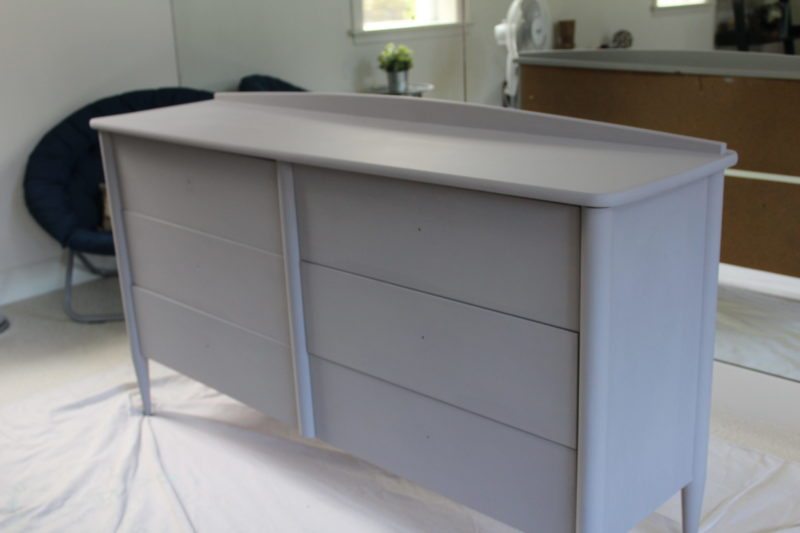
4. Distressing
There are two main types of distressing, wet and dry. Wet is done with a moistened lint-free cloth and dry is with sandpaper.
Which should you choose? Depending on the paint you use and the surface you paint you may or may not have a choice. We usually try wet distressing first. If your project isn’t suited for wet distressing you’ll realize it almost immediately. Here are the differences. Wet takes less elbow grease, so if you suffer from carpel tunnel like I do you might want to try wet distressing. Also, wet distressing is less mess. Finally, it’s easier to control.
Sanding can take you down to the raw wood easily, and sometimes I really don’t want that. You can’t get the beautiful old wood finish back if that happens. Wet also gives you a smoother finish. You can easily create any level of distressing simply by controlling the amount of pressure. To do the wet distressing technique get your lint-free cloth, put it around your finger in a tight hold, dip into water and rub.
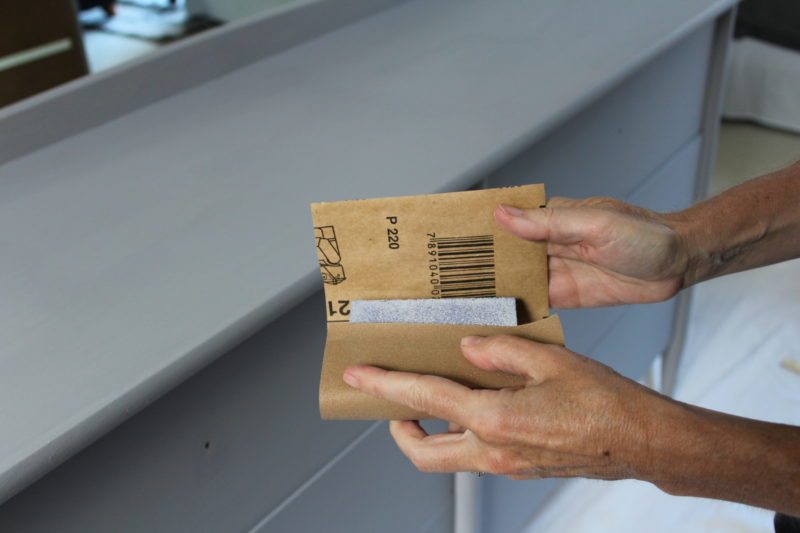
5. Smoothing Step
After you are done painting and distressing, take a small piece of 400-grit sandpaper and pass over your piece lightly, as if you were dusting. (No back and forth) This is for smoothing only and makes a big difference in the look of your final product.
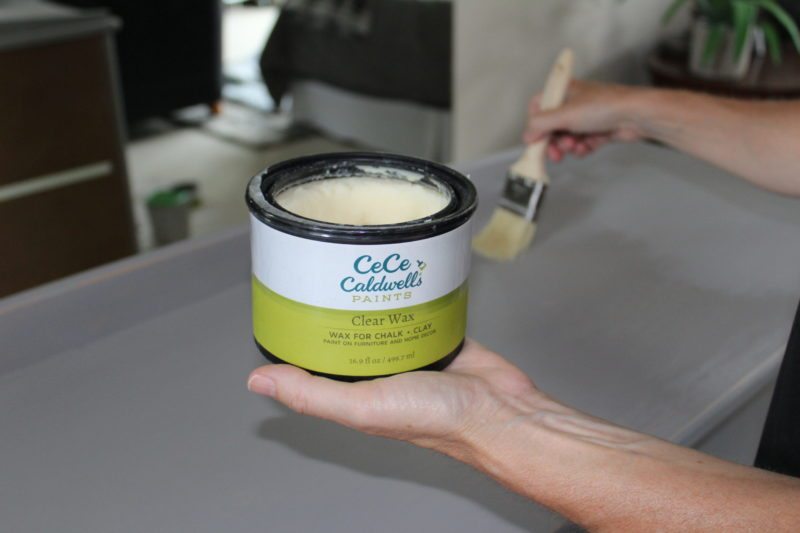
6. Chalk Painting Tutorial: Final Step
Waxing is not essential, but it is desirable. If you want an unfinished, unprotected, chalky look and feel skip this step. If you want your piece protected from wear and to achieve a more finished in look and feel then you will want to add a coat of wax. You can choose clear, light, or dark. There are also all kinds of special waxes you can find in the market place: pearl, luster, white. These obviously add a variety of different finishes and are fun to play around with. You might choose dark if you want to add some aging to your piece. Tried and true is simply clear, but don’t rule out playing around with the others on small décor items to discover the different possibilities.
Wax can be applied with a regular brush. If your piece has a lot of detail a round brush can be very useful. Otherwise, there’s really no need to invest in expensive brushes. Brush it on and wipe it off with a lint-free cloth. Let it dry (cure) overnight before you put anything on it.
You will want a dedicated brush to always use for wax. To save cleaning time, put your waxing brush in a Ziploc bag and store in the freezer.
That’s it. Our final advice is to choose a small “throw away” project to try out the above techniques. But trust us, you’ll be an expert in no time. Have fun and be forewarned: once you see how economical and easy it is to transform pieces, chalk painting can be addictive.
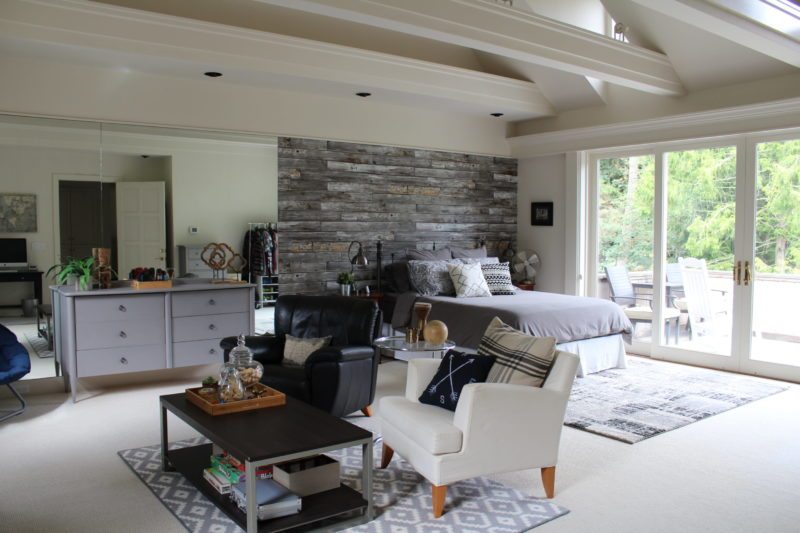
Our Last Words: Chalk Painting Tutorial
Last words on our chalk painting tutorial. Why use Chalk Paint? When you have a vision for a unique distressed, weathered, or mulit-layered look. Or, like we did above, when you just want and easy option with little to no prep time. Below, see an example of a dresser that Jodie painted using American Paint Company’s “Home Plate” (gray-toned white).
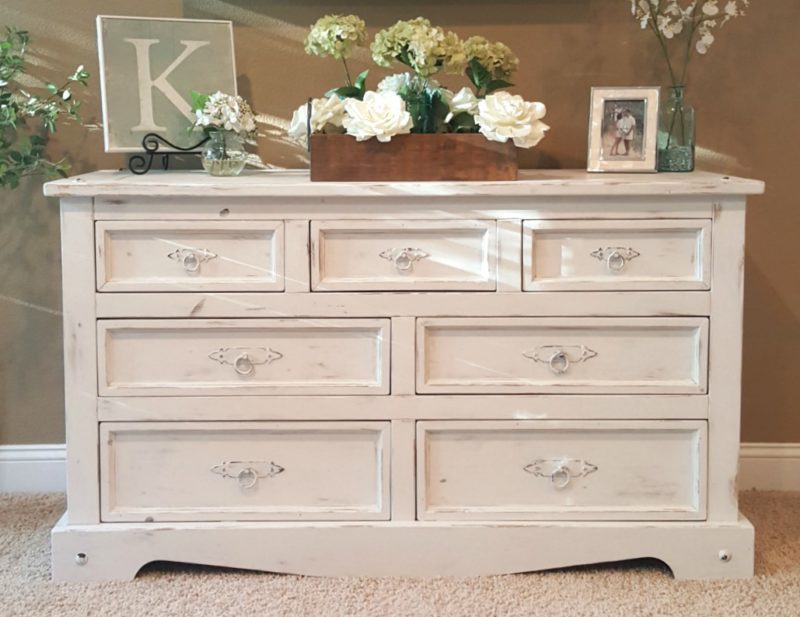
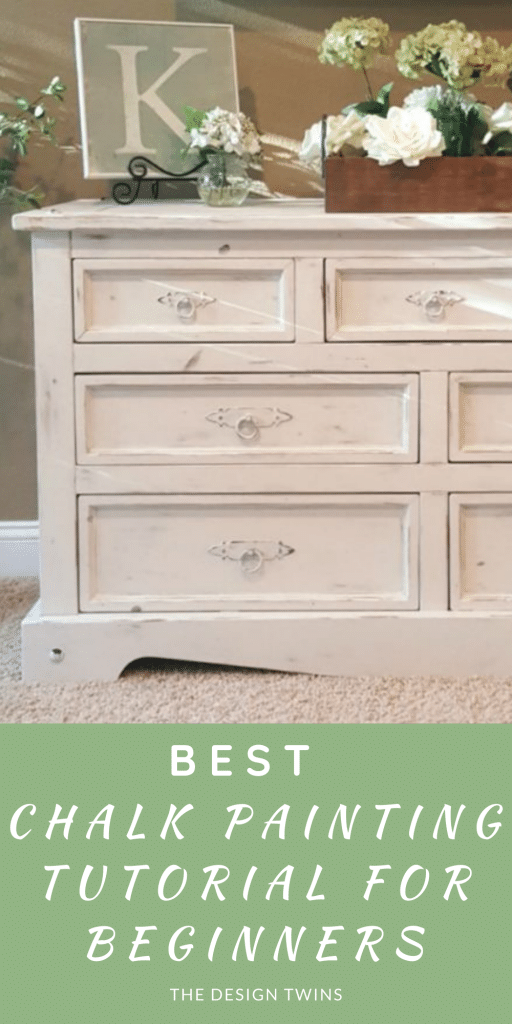
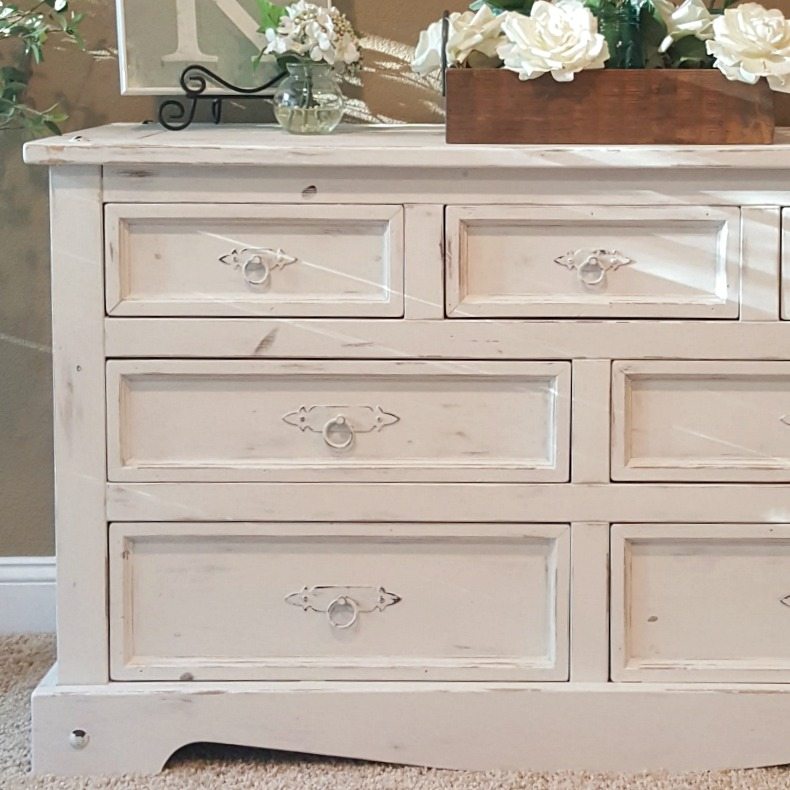




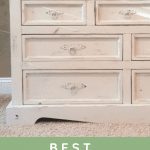
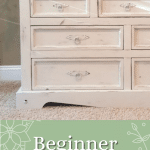
Nice! You guys are such fun to follow. Love your stuff!
Yay! Margie! So glad you found us! Thanks so much for your loving support. It means so much to us. Hope you’ll add us to your “must reads”! Blessings sweetness, Julie & Jodie
I so needed this tutorial! I was a bit afraid but I think I will try it! Thank you
That’s so awesome to hear! I remember how I felt before I did my first project and it is a bit intimidating because there is so much information out there. That is exactly why we made this one of our first blog posts. Chalk painting is so much fun! And truly is simple to do. Mostly because there isn’t really a “wrong” way to do it. So the sooner you try it out for yourself, the sooner you can start figuring out what kind of look you really want and the exact process that you will need to make that happen. Having the courage to just take that first step is all you need. Good luck, and let us know how it goes!! xoxo Jodie & Julie
So lovely, and both of you are just so cute..can’t wait to move to try the pipe shelving and chalk paint..
Sheron,
You are so sweet! Thank you so much! Can’t wait for your new painting and pipe building projects!! xoxo Jodie & Julie
This painting work is just awesome. No words to say, Thanks for sharing. Keep posting.
Hi Fred, Thank you so much! We are very happy you found this post helpful. We have a lot of fun chalk painting and repurposing old furniture…it gives such a feeling of satisfaction, not to mention being very practical. We thank you for your kind feedback and hope you will sign up for our blog so you don’t miss all the inspiration to come. Best wishes, The Design Twins, Julie & Jodie
Wow I always thought painting is intimidating. But after reading the tutorial on chalk painting, I think I might just give it a try. Thanks Julie for those very useful tips.
I love both yours and Jodie’s designs.
Hi Ana Mirela, Welcome to our blog! Gosh, Jodie and I are so excited you made it here and even more so, that you benefited from our chalk painting tutorial. We are writing another chalk painting post currently and it should be published next week. It will add on all we’ve talked about here. Never hesitate to reach out to us here or on our IG accounts with comments or questions. We are here to help! We certainly hope you will become a regular on our blog…we’ve got a lot more coming in 2017! With gratitude, Julie & Jodie.
March Madness – I hadn’t heard of wet distressing but that may be exact what I need, the sandpaper took too much off at times. Any tips for using dark wax? Thanks for these DIY blogs it must take an enormous amount of time to write, photograph not to mention do the projects.
{March Madness} What a great project! I’ve been wanting to do this to an old bookshelf I have.
Thanks for this! I recently discovered chalk paint and am excited to use it. Especially after reading more about it. 🙂 March madness
Love Love this post- Now i def want to try chalk painting a piece for sure in our new home. do you recommend chalk painting with wax a bathroom vanity? the piece we have in our new home is a very basic plain oak vanity that i want to change the color on, but wasnt sure if chalk paint is not good for the bathroom ? thoughts? Love all your tips etc on this blog. Thank you and will def be coming back to this for my list of items i will need. Lastly what is the cheesecloth used for? Thanks again for “March Madness”
Donnamarie,
I am not an expert on this, but I believe if you use the right wax to really seal it the chalk paint should be fine. However, since you have a choice between regular paint and chalk paint, I think for the bathroom I would choose regular paint. It’s just more durable and less work sealing. With all the moisture in a bathroom you might want to ere on the side of caution and make sure it lasts. Thanks for your sweet support dear friend. With love, Julie & Jodie
I’m so pleased to find your tutorial on Chalk Painting. Chalk Painting doesn’t seem to have ventured into Minnesota area. I found pint size paint at an Ace Hardware store. I didn’t buy it as I didn’t know what to do next. Now that I have found you I will be ready to get started.
I believe you have access to whatever I would need to purchase for this neophyte to try my first small piece.
I’m new to Instagram and will be new to Chalk Painting. I love your design and “how to” infromation.
How Exciting, Linda! We are so glad to inspire you along this fun journey…first IG then chalk painting…who knows what’s next!? It’s always fun to explore new territory…makes us feel so alive. We hope you will continue to join us as we are just getting started. Blessings, Julie & Jodie
I tackled my old dining room set thanks to this tutorial. Easy to follow and surprised at how forgiving this process is. Everything turned out great… except the top of my dining room table. It looks streaked! I put two coats of black followed by a coat of clear sealing wax. And rubbed and rubbed and it still looks streaked a few days later. Any ideas, hints, or suggestions on how to remedy this. I don’t want to cover it with a tablecloth! Thanks, Gayea
Hi Gayea,
Hmm. I have never used a really dark chalk paint like black. I am kind of guessing here because there are some variables that I don’t know about, but…..chalk paint in general doesn’t give a really “flawless” finish. It also dries really fast so it can show brush strokes if you run your brush over it as it is “setting.” Chalk paint is best used when the finish you are going for is a rustic or weathered look, or when you want to distress it afterward. If you’ve ever watched a video showing how to apply chalk paint they move their brush in small areas very quickly to apply the paint evenly without having to run the brush over the paint once it starts to dry (which is almost immediately.) So, without more information I am thinking the “streaking” you are referring to might be the look of brush strokes? If you really aren’t happy with it the best thing to do would be to sand down the areas that are streaked and repaint. If you really don’t want to sand you might solve some of the issue by painting over but I have never painted over wax….that’s pretty much above my experience level but it sounds like something you don’t want to do. Short of repainting or putting a table cloth over the whole thing what about using a table runner…and maybe adding cute place mats? Will that cover enough of the streaking? If you live with it for a bit you might stop noticing the imperfections and just start to love it the way it is! Flaws and all!
Thanks for reaching out and I hope this was some help!
Hugs and love,
Jodie & Julie
Thanks for your Information!
University of Jordan
http://www.ju.edu.jo/home.aspx
You’re so welcome! We’re so glad you found this helpful.
Blessings,
Jodie & Julie
[…] Tutorial: http://www.thedesigntwins.com […]
[…] Tutorial: http://www.thedesigntwins.com […]
[…] Are you a big fan of rustic, shabby chic or distressed furniture then start dong quick makeover of your furniture pieces using chalk paint. Get yourself impressed by this distressed dresser, will be a big love of rustic furniture lovers. You need chalk paint, finishing wax, drop cloth and sandpaper for this project. thedesigntwins […]
[…] Source: http://www.thedesigntwins.com […]